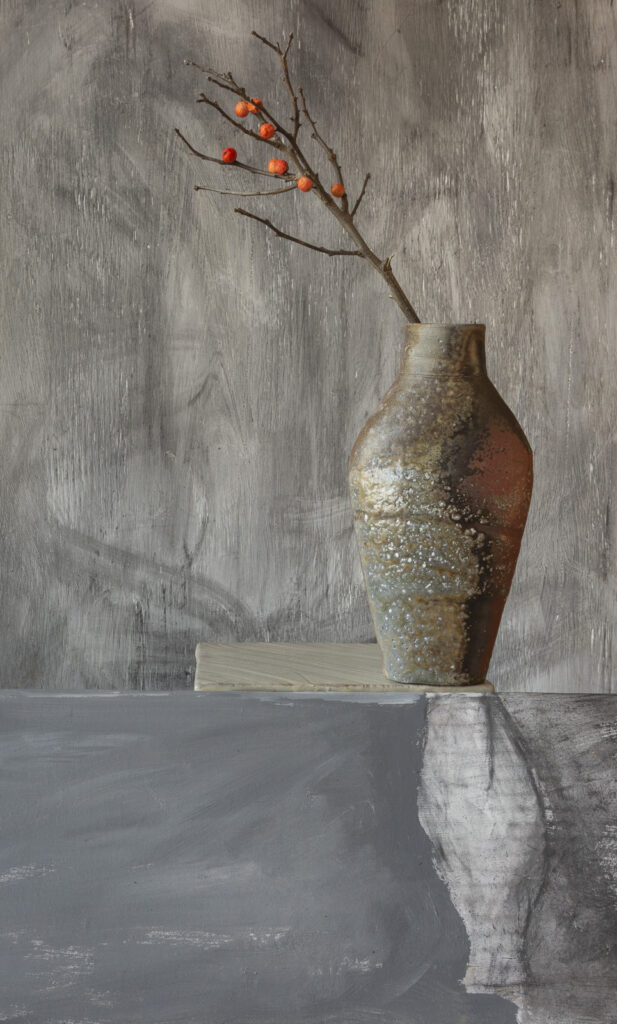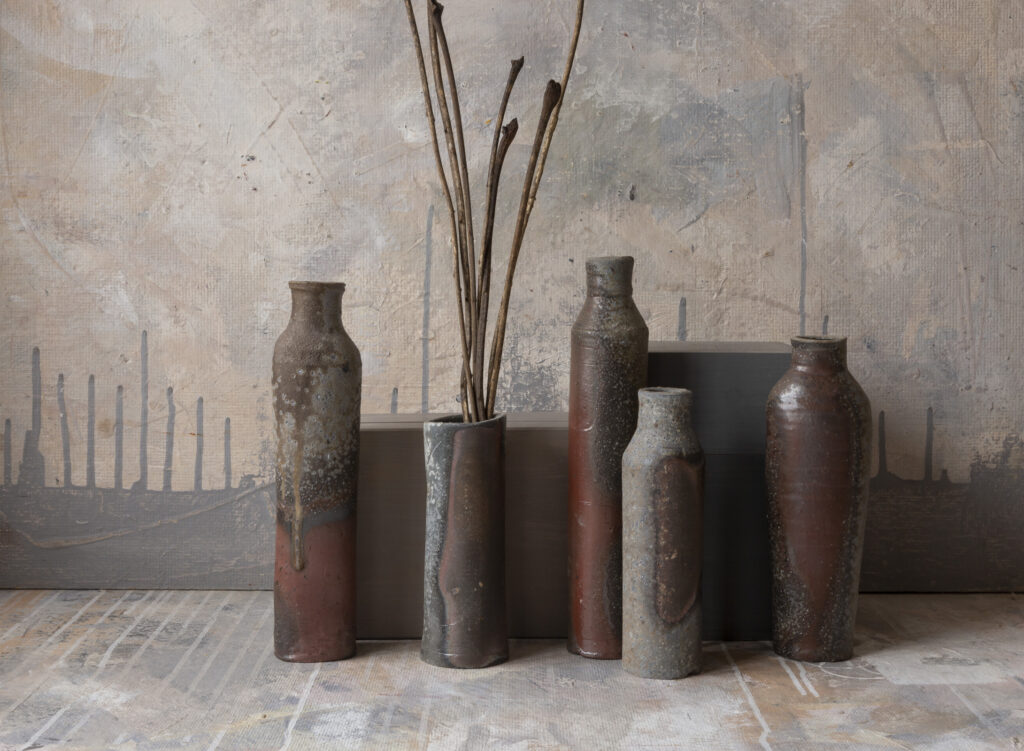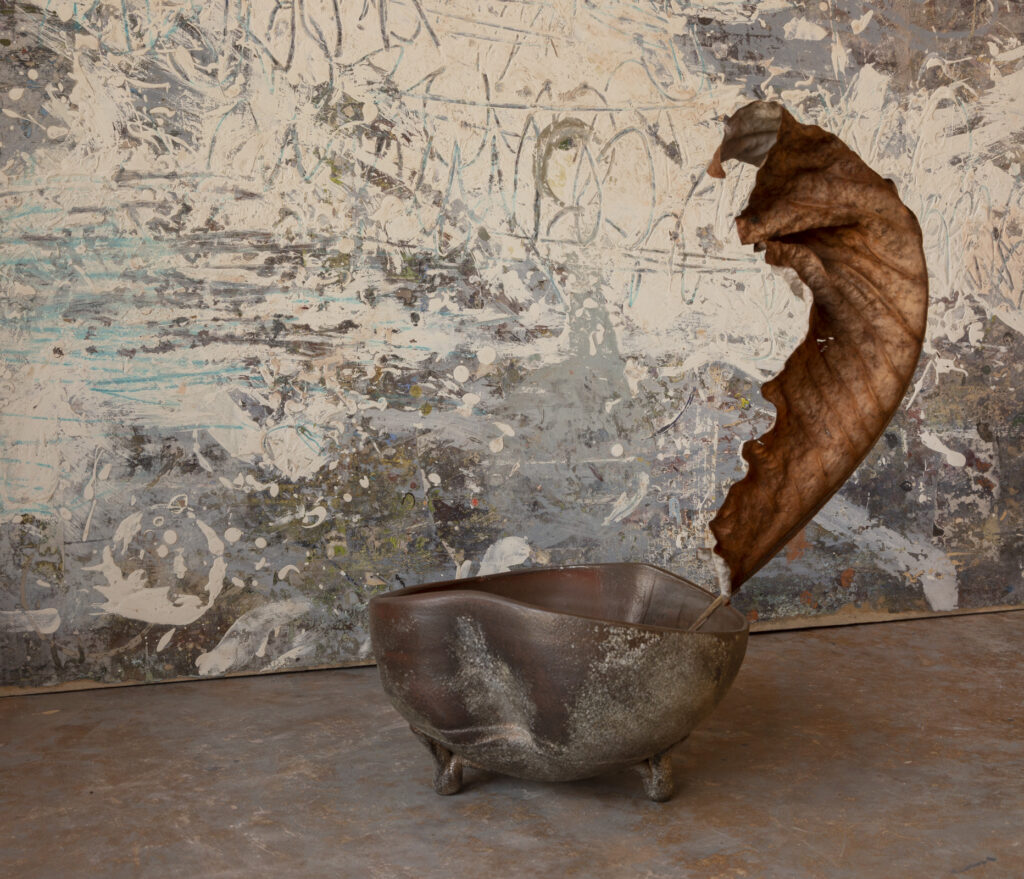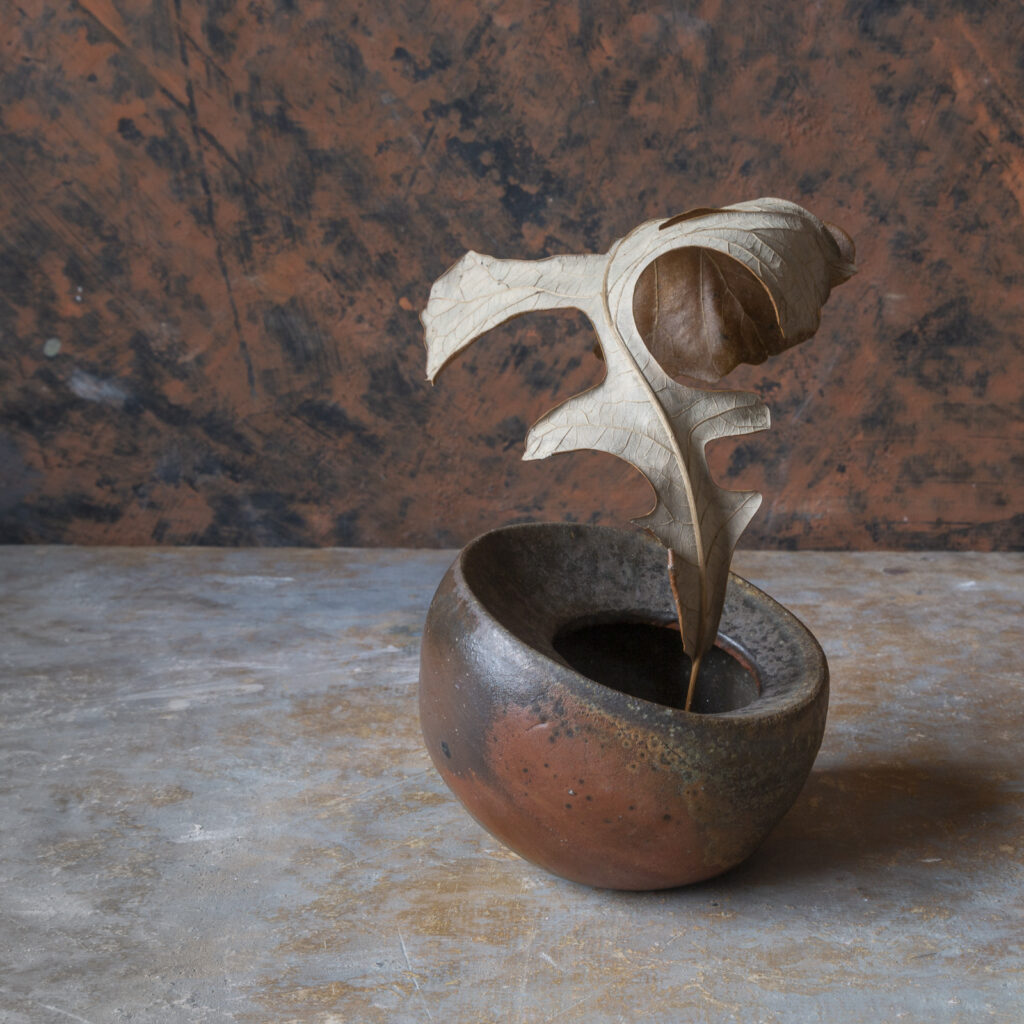I have been revisiting plant material I have used in prior decembrances, reusing old background panels but adding new pot combinations. It’s like the archive is alive and well and part of the palette. Each December I start over with the idea to post twenty-one missives. I create images of pots with stems or fruits or nuts and ponder the decreasing light. Every year I re-learn the same lesson–by focusing I can swim through the waves of December. I carefully look at the last leaves dangling off the branches. I bundle up against the wind. I admire the geese floating on the pond or the diving ducks or the great blue heron who unfolds its wings and flies with slow grace.

“Repetition is not failure. Ask the waves, ask the leaves, ask the wind. There is no expected pace for inner learning. What we need to learn comes when we need it, no matter how old or young, no matter how many times we have to start over, no matter how many times we have to learn the same lesson. We fall down as many times as we need to, to learn how to fall and get up.”
–Mark Neppo, October 1 entry in The Book of Awakening: Having the Life You Want by Being Present to the Life You Have, Conari Press








